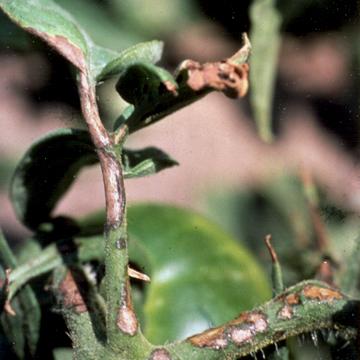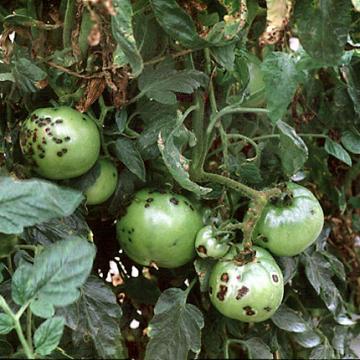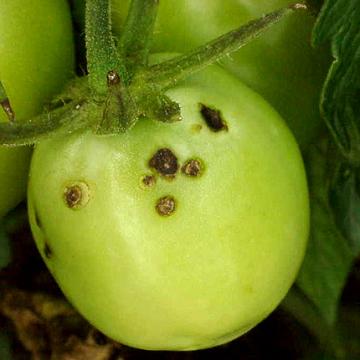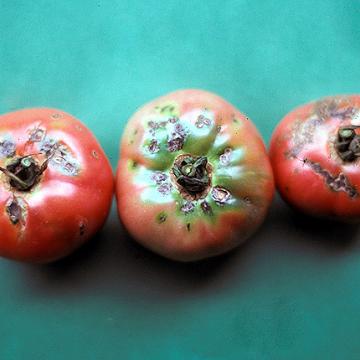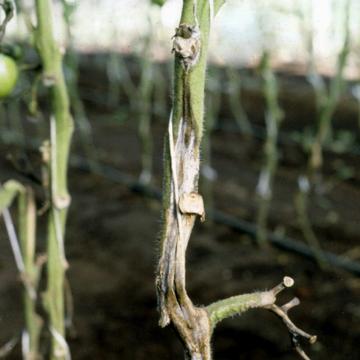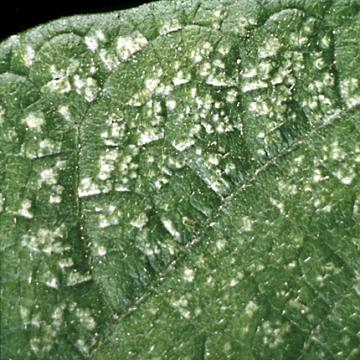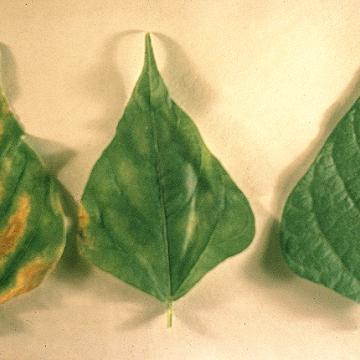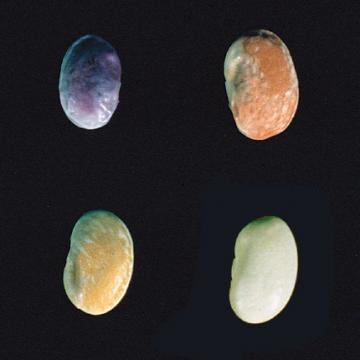DISEASE: Bacterial spot
HOST: Tomato
Necrotic lesions on stems and petioles. The bacterial spot xanthomonads are Xanthomonas euvesicatoria, X. vesicatoria, X. perforans, and X. gardneri. X. perforans is not known to infect fruit.
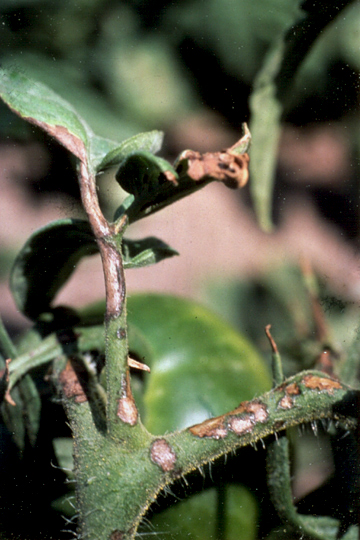
Bacterial spot | Tomato
DISEASE: Bacterial spot
HOST: Tomato (Lycopersicon esculentum)
PATHOGEN: Xanthomonas bacterial spot pathogens
PATHOGEN SYNONYM: Xanthomonas axonopodis pv. vesicatoria
SOURCE: B. S. Kim
DISEASE: Bacterial spot
HOST: Tomato
Severely infected fruit and leaves. The bacterial spot xanthomonads are Xanthomonas euvesicatoria, X. vesicatoria, X. perforans, and X. gardneri. X. perforans is not known to infect fruit.
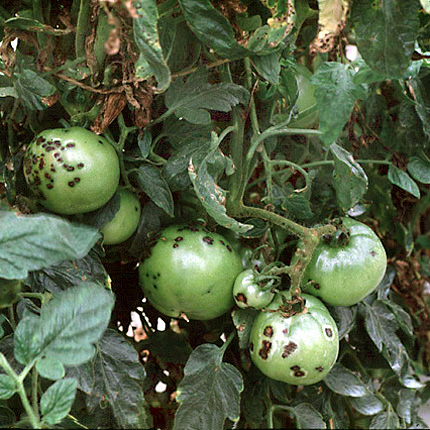
Bacterial spot | Tomato
DISEASE: Bacterial spot
HOST: Tomato (Lycopersicon esculentum)
PATHOGEN: Xanthomonas bacterial spot pathogens
PATHOGEN SYNONYM: Xanthomonas axonopodis pv. vesicatoria
SOURCE: J. Jones
DISEASE: Bacterial spot
HOST: Tomato
Green fruit with dark brown lesions. The bacterial spot xanthomonads are Xanthomonas euvesicatoria, X. vesicatoria, X. perforans, and X. gardneri. X. perforans is not known to infect fruit.
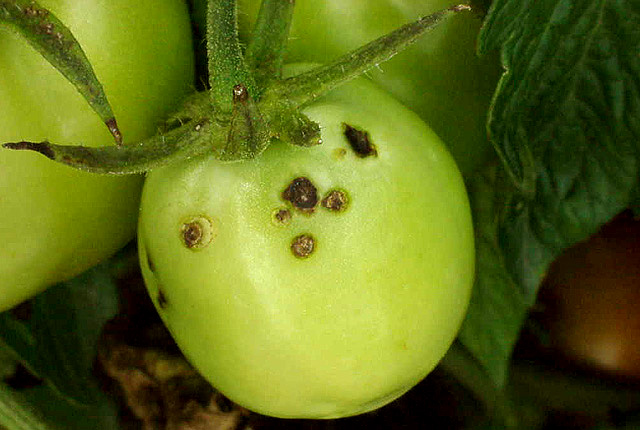
Bacterial spot | Tomato
DISEASE: Bacterial spot
HOST: Tomato (Lycopersicon esculentum)
PATHOGEN: Xanthomonas bacterial spot pathogens
PATHOGEN SYNONYM: Xanthomonas axonopodis pv. vesicatoria
SOURCE: S. Miller
DISEASE: Bacterial spot
HOST: Tomato
Ripe fruit with dark brown spots. The bacterial spot xanthomonads are Xanthomonas euvesicatoria, X. vesicatoria, X. perforans, and X. gardneri. X. perforans is not known to infect fruit.
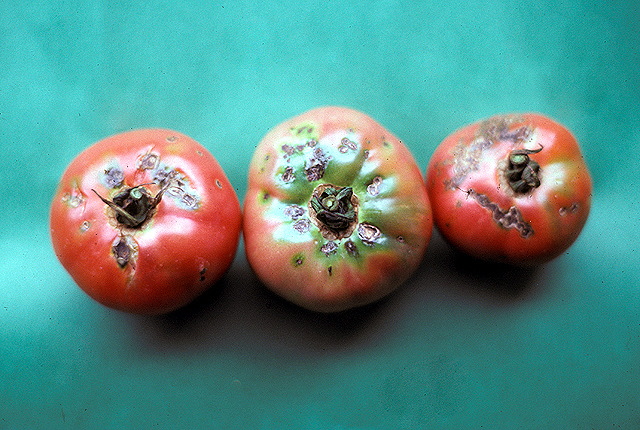
Bacterial spot | Tomato
DISEASE: Bacterial spot
HOST: Tomato (Lycopersicon esculentum)
PATHOGEN: Xanthomonas bacterial spot pathogens
PATHOGEN SYNONYM: Xanthomonas axonopodis pv. vesicatoria
SOURCE: M. Goto
DISEASE: Bacterial stem rot
HOST: Tomato
Stem with long necrotic lesions. The pathogen often enters plants following pruning injuries.
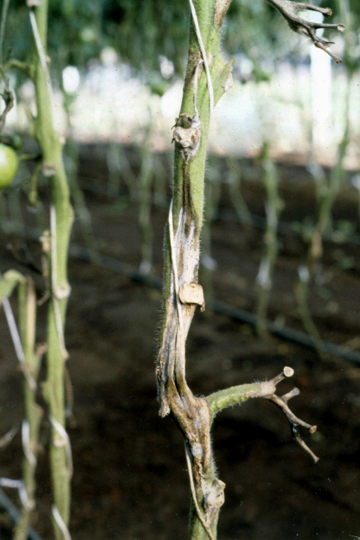
Bacterial stem rot | Tomato
DISEASE: Bacterial stem rot
HOST: Tomato (Lycopersicon esculentum)
PATHOGEN: Pectobacterium atrosepticum
PATHOGEN SYNONYM: Ewinia carotovora subsp. atroseptica
SOURCE: A. Alvarez
DISEASE: Bacterial stem rot
HOST: Tomato
Wilt is first symptom of disease. Later, the pith usually disintegrates, causing hollow and blackened stems.
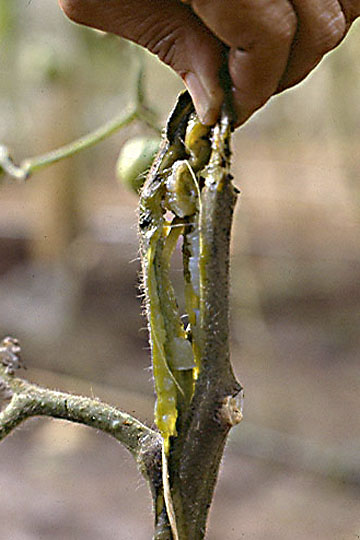
Bacterial stem rot | Tomato
DISEASE: Bacterial stem rot
HOST: Tomato (Lycopersicon esculentum)
PATHOGEN: Pectobacterium atrosepticum
PATHOGEN SYNONYM: Erwinia carotovora subsp. atroseptica
SOURCE: M. Stanghelllini
DISEASE: Bacterial wilt
HOST: Bean
Bean leaf with white pustules following inoculation. Stem inoculation causes veinal yellowing and necrosis of leaves. Infected seed may be purple or yellow.
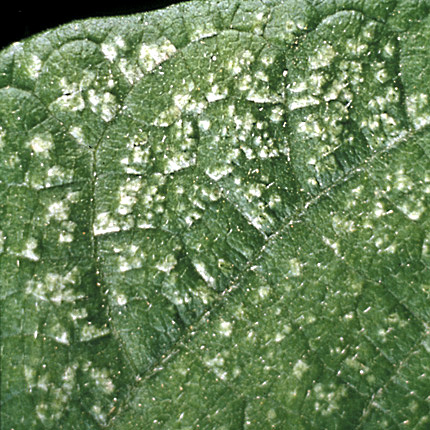
Bacterial wilt | Bean
DISEASE: Bacterial wilt
HOST: Bean (Phaseolus vulgaris)
PATHOGEN: Curtobacterium flaccumfaciens pv. flaccumfaciens
SOURCE: L. Claflin
DISEASE: Bacterial wilt
HOST: Bean
Leaves with interveinal chlorosis and necrosis. Healthy (right).
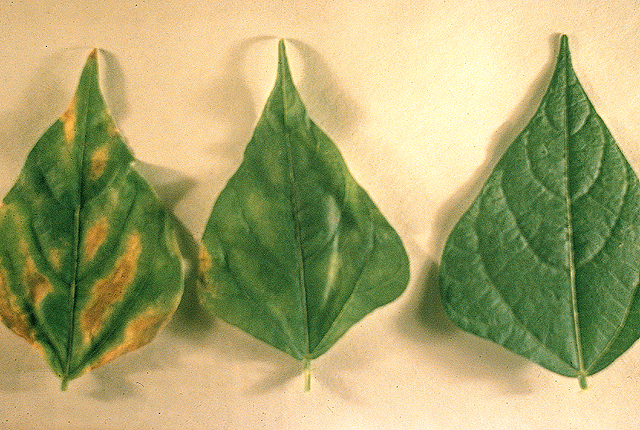
Bacterial wilt | Bean
DISEASE: Bacterial wilt
HOST: Bean (Phaseolus vulgaris)
PATHOGEN: Curtobacterium flaccumfaciens pv. flaccumfaciens
SOURCE: APS
DISEASE: Bacterial wilt
HOST: Bean
Bean seeds infected with orange (upper right), violet (upper left), and yellow (lower left) variants of Curtobacterium flaccumfaciens. White seed in the lower right is healthy.
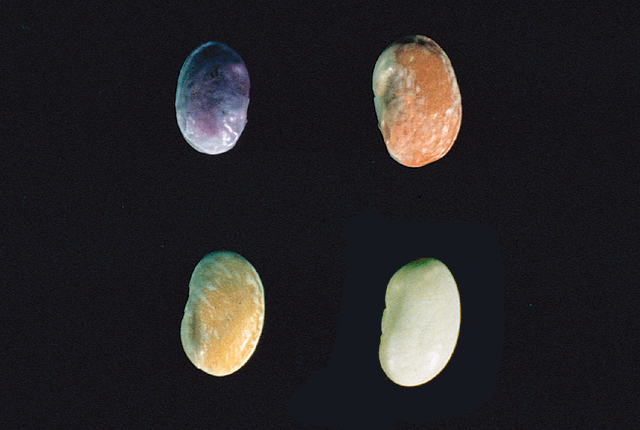
Bacterial wilt | Bean
DISEASE: Bacterial wilt
HOST: Bean (Phaseolus vulgaris)
PATHOGEN: Curtobacterium flaccumfaciens pv. flaccumfaciens
SOURCE: APS


